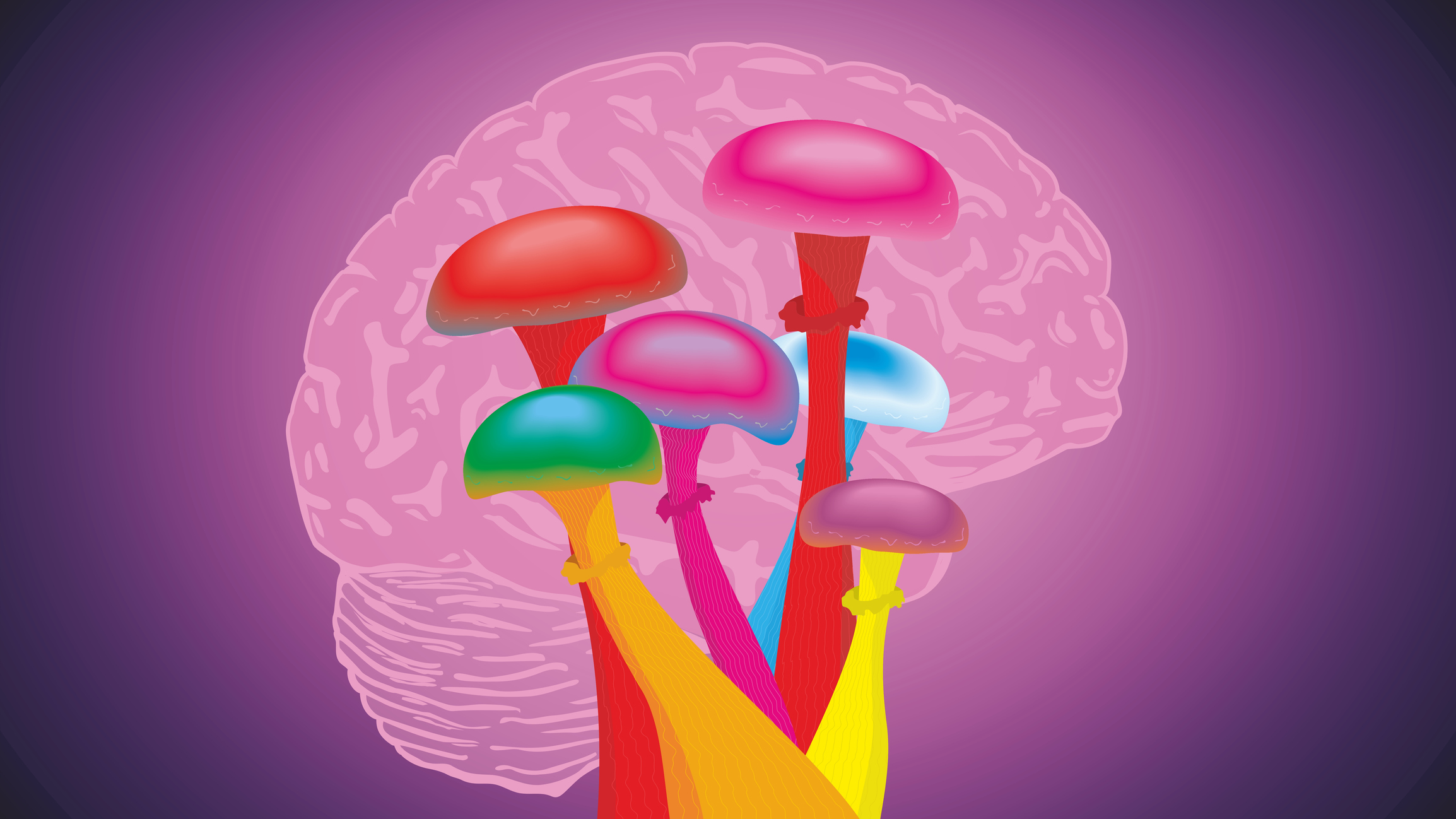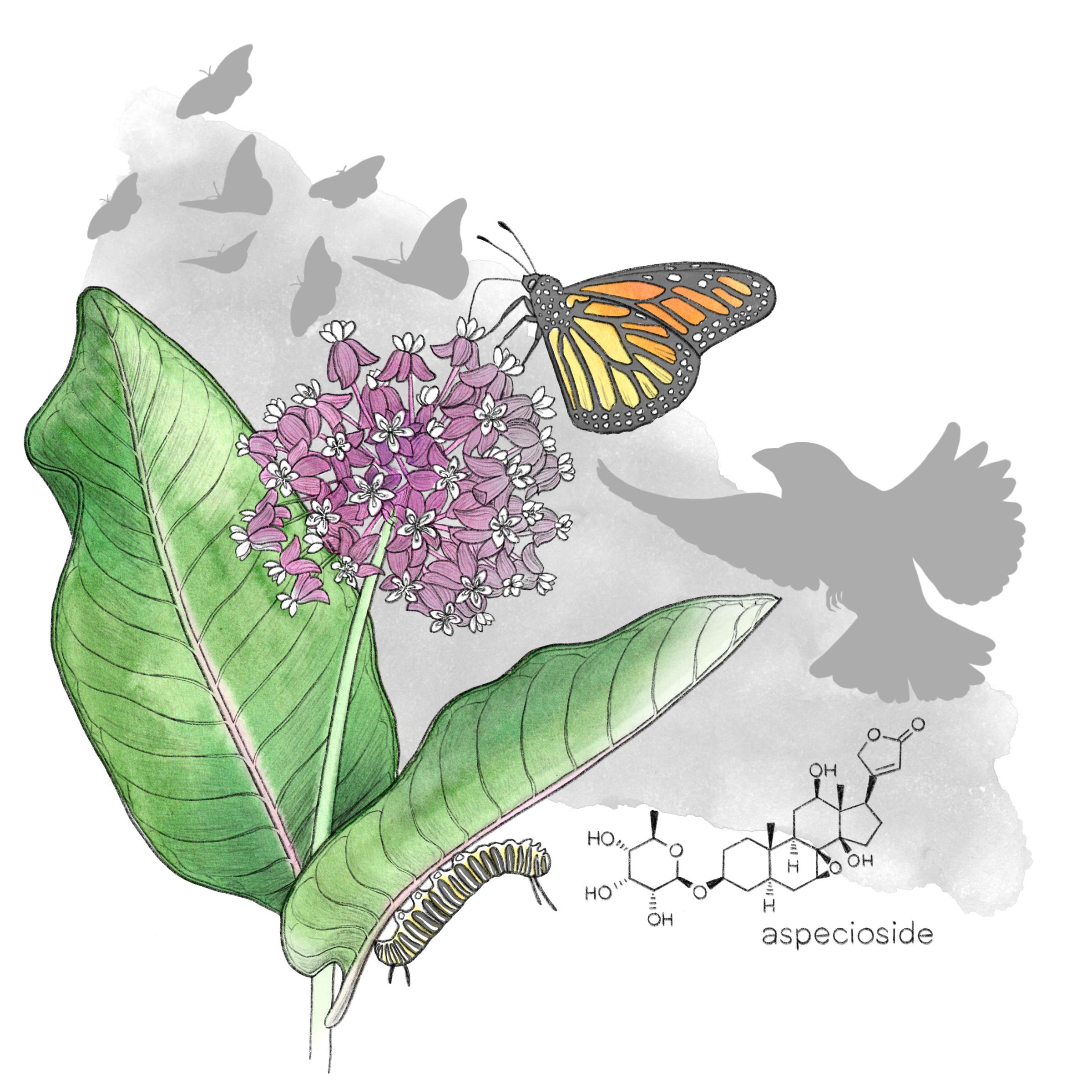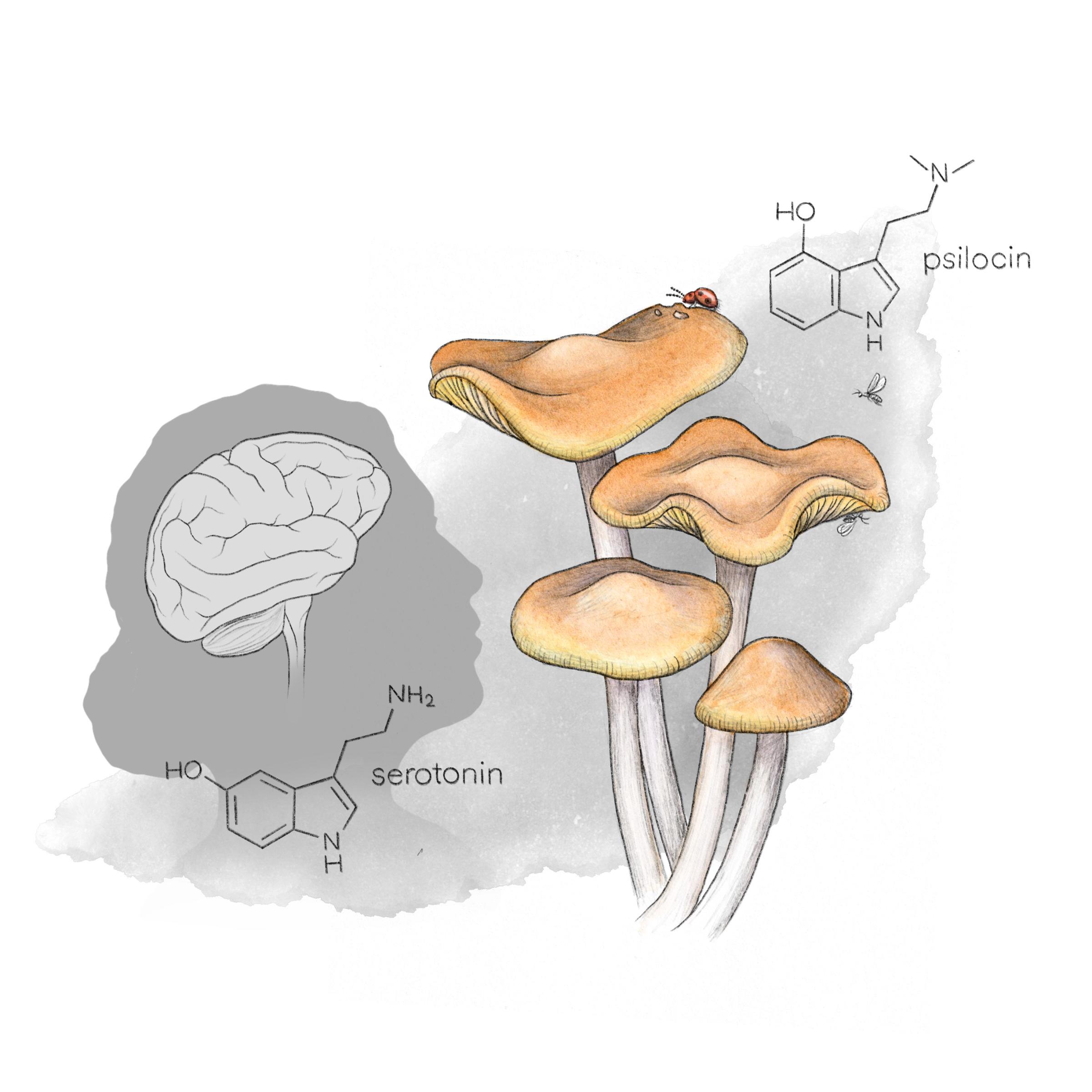
Humans rely on a bevy of strange natural chemicals to liven up our food and drink, to endure pain, and to change our perspective. We use caffeine from coffee, tea, and yerba mate to stimulate our bodies and minds, capsaicin from red pepper flakes or isothiocyanates in horseradish or wasabi to enliven our food with spice, and codeine or morphine to endure the pain of injuries and surgeries.
Lately, though, some have also turned to psychedelics like psilocybin to change their perspectives. In fact, researchers are beginning to test if they could serve as new treatments for mental health disorders.
That said, the bigger question is why plants, mushrooms, microbes and even some animals make chemicals like these with life-saving, life-enhancing, and even life-ending properties. My job as an evolutionary biologist who studies the ancient battle between plants and herbivores is to help answer this question. By doing so, we may learn important information on the potential risks, as well as the potential benefits, of deploying chemicals forged by evolution for our own devices.
Just take these five examples: Botulinum toxin, made by some bacteria to paralyze their hosts, is both one of the deadliest of all natural toxins known to science and the active ingredient in the anti-wrinkle drug Botox. A chemical used by bread mold to ward off competing bacteria is also the wonder drug penicillin. A potent insecticide produced by distantly related plants is also the most widely used psychoactive drug in the world: caffeine. A poison made by yew trees to slow the growth of caterpillars is also the potent anti-cancer drug known as Taxol, which stops rapidly dividing cells from growing, like those in malignant tumors. The venom cone snails use to paralyze fish also contains the powerful pain killer ziconotide.
It seems like these chemicals were tailor-made for us. Yet, no humans were around when the organisms producing the chemicals first evolved the ability to make them. A closer look reveals that in many cases we seem to have simply intercepted chemical weapons deployed in what naturalist Charles Darwin called “the war of nature.” Quite simply, many baroque chemicals we use and abuse appeared on the planet because they enhance the survival odds of the organisms that make them or absorb them through their diet or microbiomes.
More From TIME
Humans have been the unwitting beneficiaries of this war, as well as, at times, its victims. The death of my father from alcohol use disorder in 2017 fell squarely into the latter category. He died because he couldn’t stop drinking a toxin made by brewer’s yeast called ethanol, the alcohol in beer, wine, and spirits. Brewer’s yeast make ethanol to prevent other microbes from competing for sugar in fruit and to store the energy for later use, as a poisonous private reserve.
The yeasts aren’t alone in creating protective chemical shields for themselves. Consider the monarch butterfly, whose caterpillars chew milkweed plants and take up the cardiac glycoside heart poisons found in its sap. When they turn into butterflies, the re-purposed plant poisons provide a chemical shield from hungry birds and other predators. In 2019, my collaborators and I used CRISPR gene editing to discover how the butterflies evolved to resist the potent heart poisons in their own bodies. Similar chemicals made by Digitalis foxglove plants were among the first drugs used to treat heart failure.

When my father died, I began to see more clearly that my research on the evolution of toxins was also a mirror into my father’s demise. And in the wake of both his death from a yeast toxin and our research on toxic butterflies, natural psychedelic chemicals were also having a moment. Psychedelics are chemicals that bind to and activate serotonin receptors in our brains. They include serotonin-mimicking psilocybin from “magic mushrooms,” DMT from the Psychotria plants used by shamans in the Amazon to prepare ayahuasca, the 5-Meo-DMT found in the venom glands of the Colorado River or Sonoran Desert toads, mescaline in peyote and San Pedro cacti, and LSD-like ergot alkaloids like lysergic acid hydroxyethylamide produced by some fungi, for instance, that live in the seeds of some morning glory plants.

Just as natural psychedelics evolved independently in many different organisms, so, too, did their cultural use over and over by Indigenous peoples around the world who deploy them as medicines, spiritual practice, and more. Although long taboo in modern “Western” societies, psychedelic chemicals are emerging as transformative therapies for a wide range of mental health disorders that are resistant to treatment, from alcohol use disorder to post traumatic stress disorder.
Why do some organisms make psychedelic chemicals? Perhaps because what is good for the goose is good for the gander: like botulinum toxin, penicillin, caffeine, Taxol, and ziconotide, natural psychedelics may serve as chemical weapons that plants, fungi, and animals use in defense against enemies
Although we are still trying to understand the origins and functions of natural psychedelics in the organisms that make them, it is clear that their evolution has nothing to do with us. Given that the ability to produce them evolved millions of years ago when no humans were alive, we would do well to study and scrutinize their natural functions as our society embarks on a rapprochement with these powerful compounds. Basic research into their evolution is as critical as the clinical trials being conducted to assess their potential as drugs. By examining each side of these double-edged swords, we can learn more about how they might work as drugs, and how they might harm us.
5-Meo-DMT, DMT, psilocybin, mescaline, and ergot alkaloids are extremely bitter, so most animals probably avoid them in nature, which can serve as a defense in itself. Among the plants that make 5-Meo-DMT and DMT, grasses in the genus Phalaris are protected from grazing mammalian herbivores like sheep, who find these and related but non-psychedelic chemicals like gramine, unpalatable. If they are eaten, a condition known as the “phalaris staggers” has been reported, reflecting the potentially neurotoxic effects of these alkaloids in the grasses.
Similarly, one clue to why magic mushrooms evolved to produce high levels of psilocybin comes from the fact that these fungi turn blue when injured. In that case, two enzymes chemically transform psilocybin into a chain of psilocin molecules that become linked to one another. These chains act much like indigo or some tannins, which also turn blue when oxidized, and may disrupt the digestive tract. Although psilocin is what causes psychedelic experiences after it is converted from psilocybin, those experiences may be unintended consequences of its ultimate function for mushrooms.
Read More: What Psychedelics Can Teach Us About Play
When considering their potential as medicines, I am a strong proponent of putting psychedelics through their paces to assess their safety and efficacy and subjecting them to double-blind, placebo-controlled clinical trials, the gold standard in medicine. I am convinced that psychedelics hold great potential as therapies for a wide range of mental health disorders. Maybe they could have even helped my father.
Yet, psychedelics are not a sure-fire remedy. The clinical trials to date are small, and the volunteers are highly motivated to seek treatment. Although illicit, clinically unsupervised, and recreational use of these drugs is pervasive, there is far more we don’t know about how they work in us, and the risks they may pose, especially to the most vulnerable people in our society.
Lessons from nature suggest that natural psychedelic chemicals evolved to keep enemies at bay. Although Taxol works by preventing cancer cells from dividing, it can stop any cell from dividing, including those that allow our hair to grow, which is why hair loss is a side effect. It clear that the idea that what is “natural” is inherently good for us is the appeal-to-nature fallacy. Such faulty reasoning has seeped its way into the wellness industry, is perpetuated by mass media, and is even in the scientific literature. It is also rearing its head as we attempt to understand the origins and functions of natural psychedelics for the organisms that make these chemicals. Despite their clear promise as therapies, we should not forget that the organisms that produce these and all other would-be drugs in nature’s pharmacopeia desperately want to live, too. Living requires battling in the grinding and unforgiving war of nature.
More Must-Reads From TIME
- The 100 Most Influential People of 2024
- Coco Gauff Is Playing for Herself Now
- Scenes From Pro-Palestinian Encampments Across U.S. Universities
- 6 Compliments That Land Every Time
- If You're Dating Right Now , You're Brave: Column
- The AI That Could Heal a Divided Internet
- Fallout Is a Brilliant Model for the Future of Video Game Adaptations
- Want Weekly Recs on What to Watch, Read, and More? Sign Up for Worth Your Time
Contact us at letters@time.com